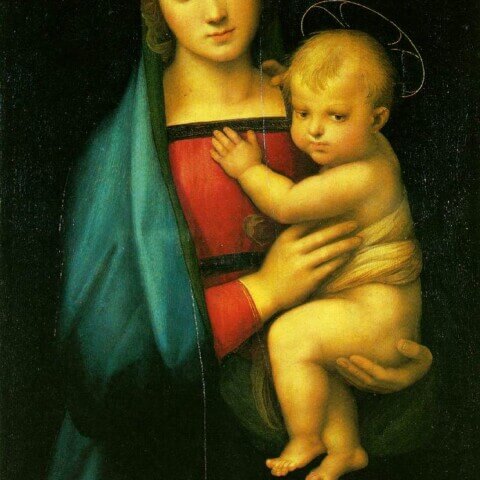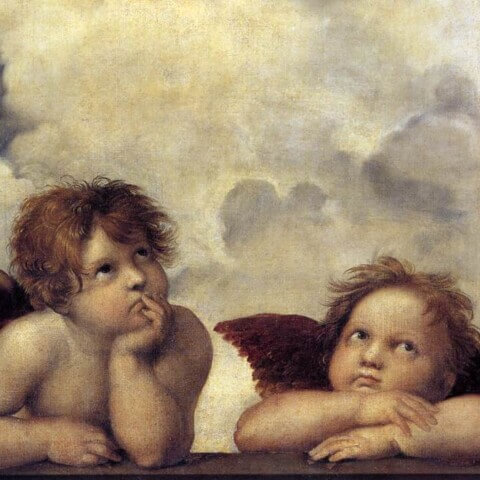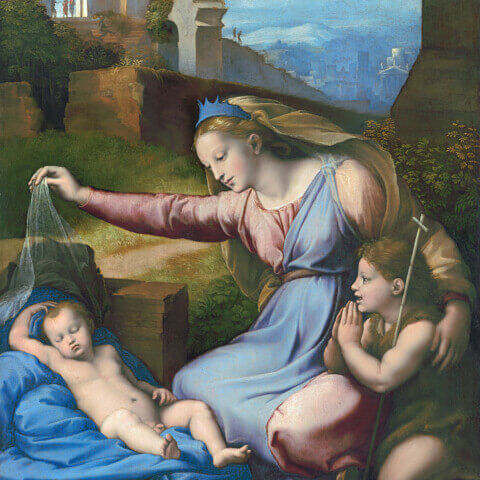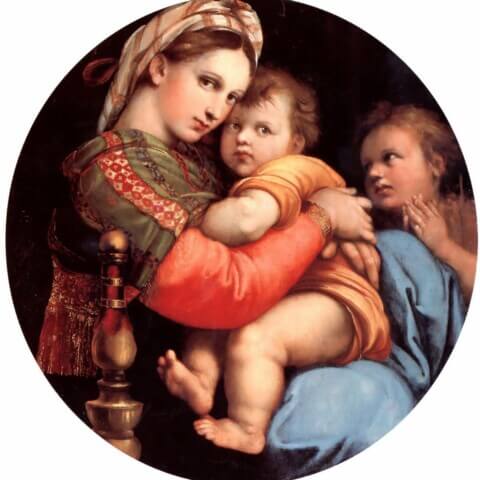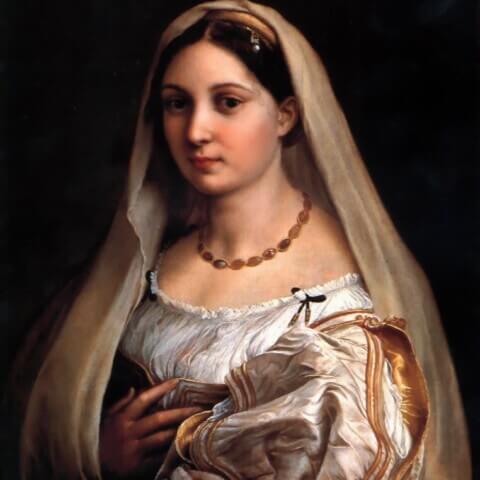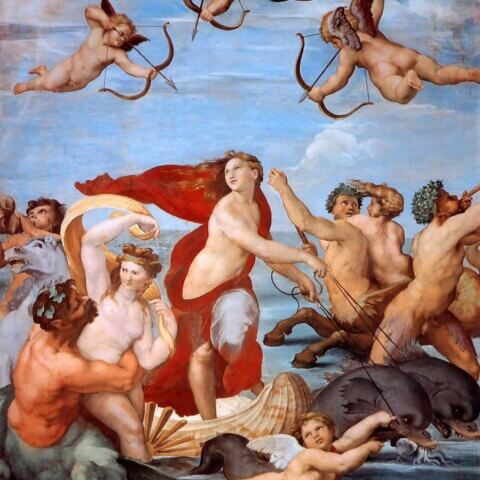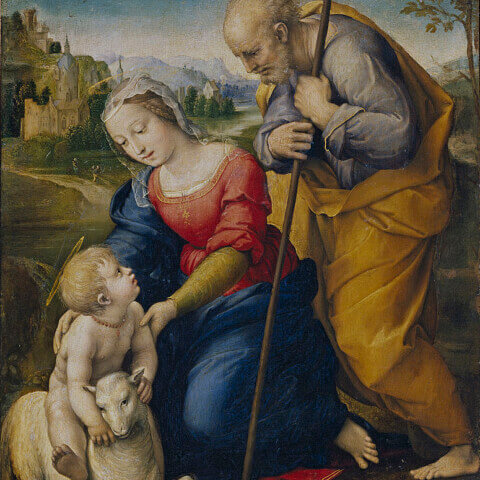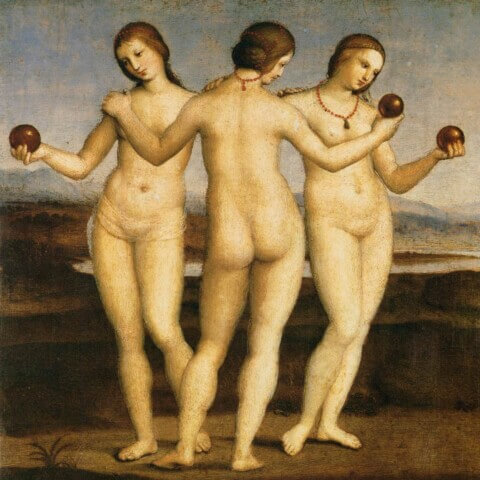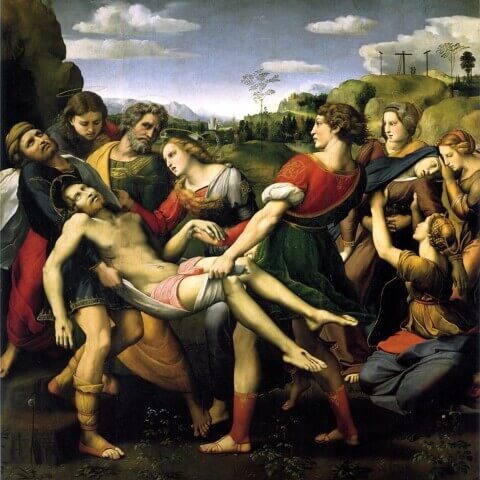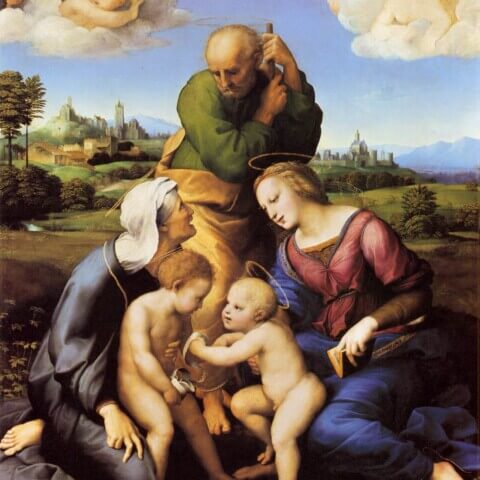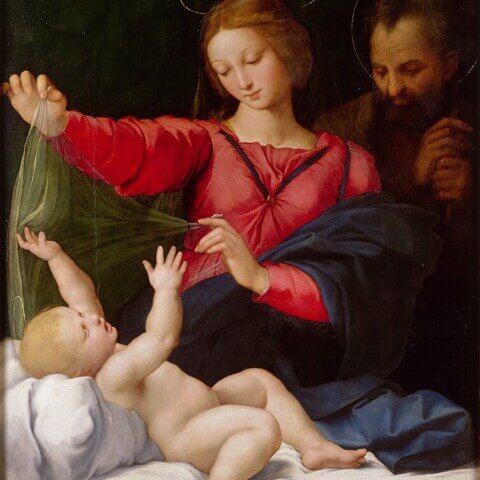Raphael
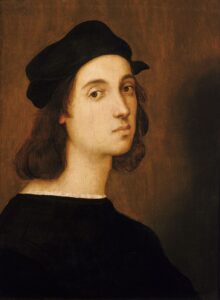
Raffaello Sanzio da Urbino, known widely as Raphael, was an Italian painter and architect of the High Renaissance period. His work, characterized by clarity of form, ease of composition, and visual achievement of the Neoplatonic ideal of human grandeur, places him among the great masters, often mentioned alongside Leonardo da Vinci and Michelangelo.
Raphael was born on April 6, 1483, in the town of Urbino, Marche, in central Italy. His father, Giovanni Santi, was a painter for the Duke of Urbino, Federico da Montefeltro, and it is likely that Raphael was introduced to art at a young age through his father’s workshop. Raphael’s mother died when he was eight, and his father died three years later, leaving him an orphan at eleven.
In his early teens, Raphael apprenticed with the Umbrian artist Pietro Perugino, who was well known for his precise and clear use of perspective, qualities that would become hallmarks of Raphael’s own style. By the age of seventeen, Raphael was described as a “master” painter, and he began accepting his own commissions.
Raphael’s reputation quickly grew, and he was eventually summoned to Rome in 1508 by Pope Julius II. The Pope, a great patron of the arts, commissioned Raphael to fresco what are now known as the ‘Stanze di Raffaello’, in the Vatican. Among these frescoes, The School of Athens is perhaps the most famous, depicting ancient philosophers in a grand imaginary gathering, a tribute to the world of classical knowledge.
Raphael’s style continued to evolve in Rome, where he absorbed influences not just from the work of his contemporaries such as Michelangelo and Leonardo da Vinci, but also from his study of ancient Roman sculpture. Raphael was known for his ability to absorb artistic lessons from others, yet create work that was uniquely his own.
Raphael was not only a painter, he was also an accomplished architect. Following the death of Donato Bramante in 1514, he was named the architect in charge of St. Peter’s Basilica, where he worked on designs for the basilica itself and for structures within the Vatican.
Despite his remarkable success, Raphael’s life was cut tragically short. He died on his 37th birthday, on April 6, 1520. According to some reports, his death was due to a fever that he contracted after a night of excessive celebrating. Despite his short life, Raphael produced a vast body of work, including paintings, frescoes, and architectural designs, which have cemented his legacy as one of the defining artists of the High Renaissance. His influence on Western art cannot be overstated; his contributions to composition, form, and visual elegance continue to inspire artists to this day.

